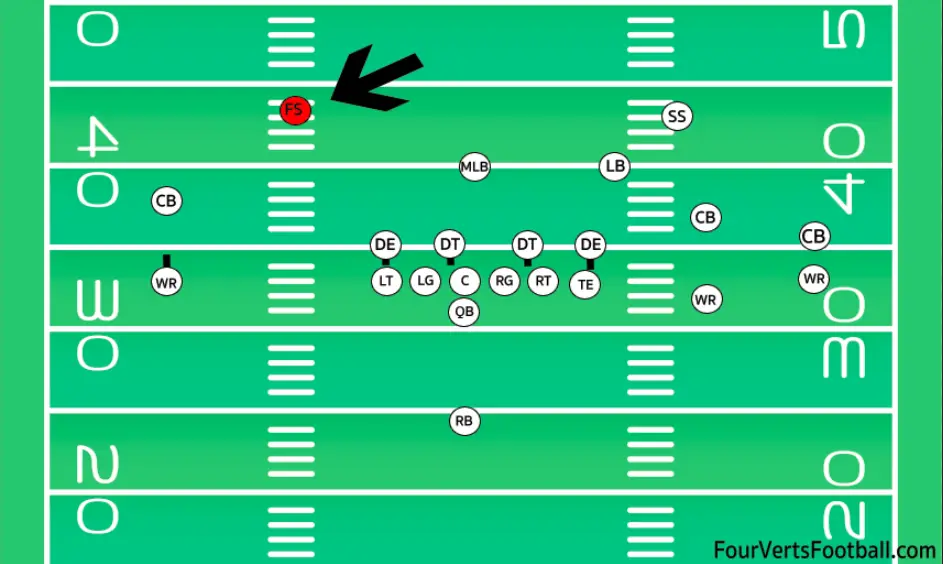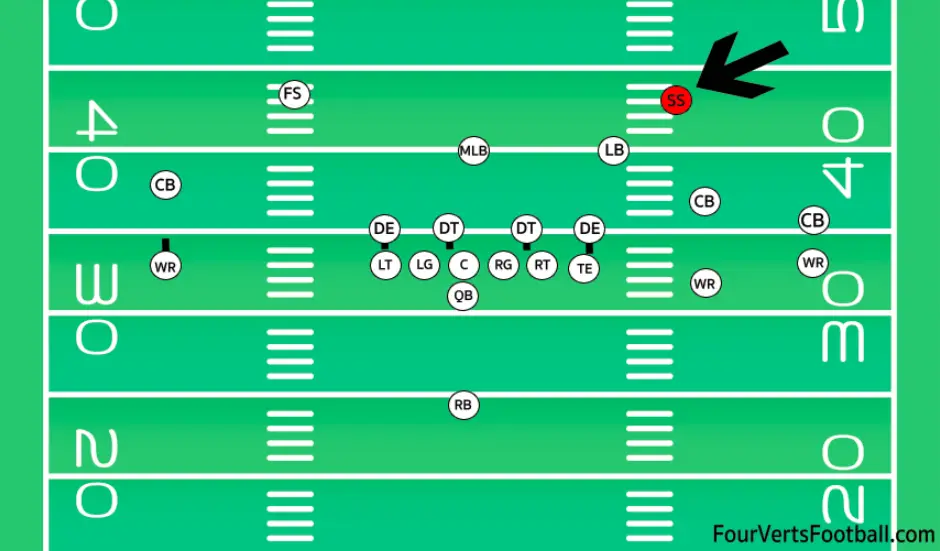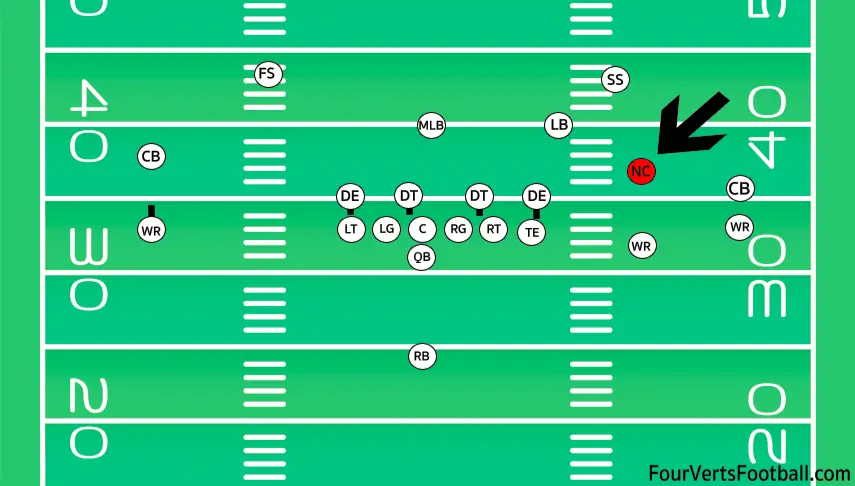A secondary in football refers to the group of players that play deep into the defenses backfield. These players act as the last of defense for a football team. The secondary’s main responsibility is to stop the opposing team from completing passes.
The secondary is also quite involved in the run game. Often times running backs will get past the defensive line and linebackers leaving only the secondary to bring these players down.
What Positions Are In The Secondary?
The players in the secondary often have similar responsibilities though it is made up of several different positions. Full safeties, strong safeties, and cornerbacks make up the positions of the secondary.
Below we will break down the responsibilities of each position.
Free Safety

A free safety is one of the two safeties that make up the secondary. The free safety lines up on the weak side of the field. This means the side of the formation that has fewer players.
The free safety slightly is more involved in the passing game when compared to the strong safety.
This is because the offense is less likely to run the ball towards the side of the formation with fewer offensive players. Additionally, the free safety is often going to start the play further back from the line of scrimmage than the strong safety.
Free safeties will usually weigh a little less than the strong safety so that they are able to move more effectively in the defensive backfield.
This player is typically the furthest back in coverage and is often tasked with helping cornerbacks on deep passes.
In a cover 1 defense the free safety is generally going to be the one defender covering the deep portion of the field.
Strong Safety

The strong safety is the second safety position in the secondary. The strong safety is typically a little bit larger than the free safety. The reason for this is that they line up on the strong side of the formation.
The strong side is the side of the formation with more players. This extra player is often a tight end. The strong safety will often have to get through the block of the tight end to bring down a running back.
Since the tight end is usually lined up on the strong side the ball is typically run in that direction.
This means the strong safety is often going to have a shot at bringing down the ball carrier on passing plays.
This safety is also heavily involved in the passing game. Often tasked with the responsibility of helping with receiver coverage as well as covering the tight end.
Cornerbacks

Cornerbacks are players that are tasked with shutting down wide receivers. On each play the cornerbacks will either be assigned man coverage or zone coverage.
Man coverage has each cornerback assigned a specific offensive player to cover for the duration of the play.
Zone coverage has the cornerback covering a specific section of the field. If any offensive player enters the cornerback’s zone he will cover them until they leave the area.
Many defenses use a combination of zone and man defense amongst the players in the secondary.
On running plays, these players will have to get past the blocks of the receivers in order to tackle the running back.
Since cornerbacks cover wide receivers they generally line up near the sideline. This distance between them and the ball means that they are not often going to be involved in rushing plays.
That being said if the ball is being run to the outside the cornerbacks will have to step up and try and contain the running back towards the middle of the field.
Nickel Corner

A nickel corner is an extra cornerback that may join the secondary in specific situations. This player has the same job as a regular cornerback though they are lined up closer to the middle of the field.
A nickel corner typically plays from the slot and usually comes on the field when the opposing team uses three or more wide receivers.
Receivers will often be able to get open if they are not covered by a defensive position that specializes in pass coverage.
When the offense brings more receivers onto the field the defense will react with a nickel corner that can match the extra receivers speed and agility.
Due to the increased amount of passing in the NFL in recent years nickel corners have become a much larger part of the secondary in football.
How many players are usually in the secondary?
A traditional secondary is made up of two safeties and two cornerbacks.
In most cases, the cornerbacks will be lined up wide on each side while the safeties will line up closer to the middle of the field.
The cornerback’s setup out wide will cover the two wide receivers that most teams send out each play. But when the opposing offense sends out more receivers the secondary adapts.
Nickel Defense
When an offense sends more receivers than usual onto the field teams may respond by using a nickel defense. This defensive formation changes the secondary to feature more players.
In this circumstance, a fifth player is added to the secondary. This is where the name nickel came from.
In these situations, a defensive lineman or linebacker will be subbed off the field and replaced with a cornerback.
At this point, the secondary is made up of three cornerbacks and two safeties.
Dime Defense
Similar to a nickel defense a dime defense is used when the opposing team is using a larger amount of receivers than normal. With this defense another player will be added to the secondary.
Again a linebacker or defensive lineman will be removed in place of a cornerback.
When a dime defense is used the secondary is made up of four cornerbacks and two safeties.
Quarter Defense
The quarter defense is yet another formation that changes the number of the players in the secondary. The quarter defense is rarely used in games. Typically defensive coordinators use this defense in hail mary situations.
A quarter defense features two safeties and five cornerbacks. At this point, there is usually only one linebacker and three defensive lineman in the box.
So, in conclusion, there are usually four players in the secondary but in some instances, there can be as many seven.

